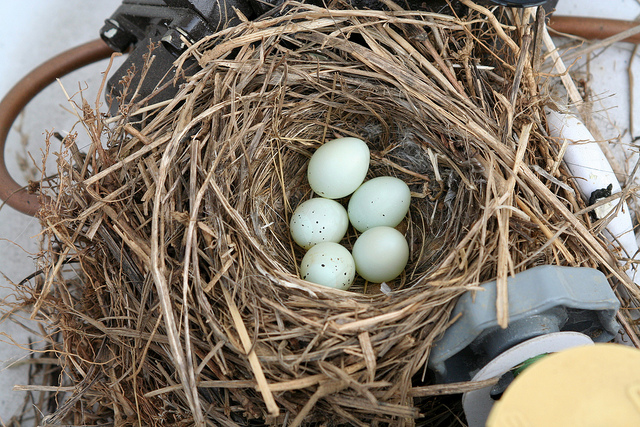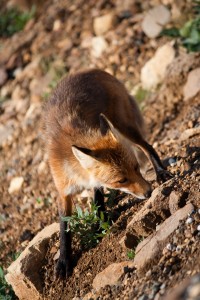Nest and Egg Identification Resources

Bird Nest and ID Suggestions
Often times, when walking in the woods, or tending a garden, you'll see a bird nest, but no bird, only eggs or hatchlings. Adult birds are quite savvy about spotting approaching humans, and often fly off and observe their nest from a distance, making it hard to identify which bird belongs to which nest. This post is a rough first start at identifying some common Eastern US bird nests, and some resources you can use to help you with your identification.
Before you begin looking:
Before you begin trying to figure out the bird nest that you have found, a few words of caution:
- Predators can smell you. Even though smell is not as integral to our lives as predators like cats, raccoons, skunks, and foxes, it's still something to be aware of. When you walk to a nest, or around it, you are leaving a scent trail, which is an open invitation to predators. Try to avoid going directly up to a nest, touching a nest, or walking around it to lessen the danger to baby birds.

- If you can, watch the nest you find from a distance. Use binoculars to check it out, and try to keep away. If you inadvertently come upon a nest, then walk around in circles, and keep moving away from the nest. Stop at other random places, and try to leave a scent trail that does not stop at the nest. When doing bird research I would even take off my smelly shirt or socks and rub them on trees and rocks, well away from the nest, and walk on.
- Do not reach into nests or remove eggs or fledglings. It's a myth that birds can actually smell you, or will abandon the eggs if they smell a human. However, the stress of having a predator touching and handling the eggs or young, may cause the parents to abandon the nest, so don't do it!

